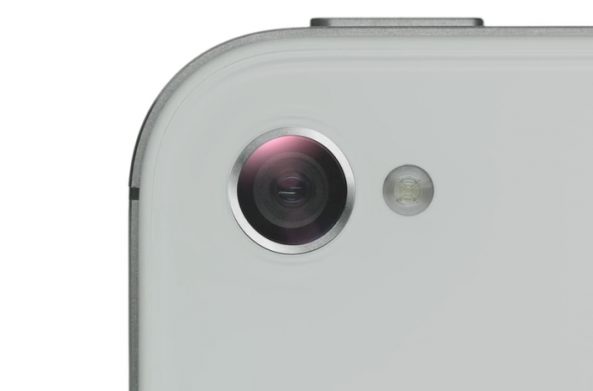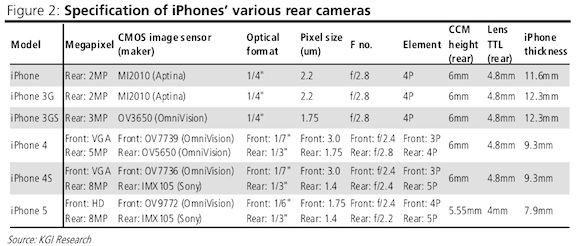With the LinkedIn privacy scare and Google’s 3D maps taking over news today, we’ve seen little updates concerning Apple’s upcoming iPhone. Enter KGI Securities analyst Ming-Chi Kuo, who argues in today’s note to clients that the next iPhone will use back and front cameras re-engineered with thinness in mind.
And if you’re new to iPhoneography, you’re probably thinking that a higher-resolution CMOS sensor is also in the cards. Not so fast…
As Apple likes to argue, the quality of the photograph isn’t just about the megapixels.
According to Kuo (via MacRumors), the back camera that got re-branded as iSight with the iPhone 4S will still be eight megapixels. What the company is apparently doing is increasing aperture from f/2.4 to f/2.2 in order to reduce camera module height by nearly 0.5 mm.
It’s actually gonna file as “the first-ever slimmed rear camera of all iPhones”, which will help Apple’s engineers achieve a desired thinness of the iPhone 5.
Changing the back camera module’s size and increasing aperture could introduce serious engineering challenges:
Larger aperture means more noises. In addition, the reduced thickness means even greater challenges for lens design and assembly, as not only the lens, but also the voice coil motor (VCM) and CMOS image sensor (CIS) need to be slimmer.
Finally, the compact camera module (CCM) suppler, responsible for the terminal assembly, will be confronted by assembly yield.
The analyst is also betting that Apple’s rumored adoption of a 16:9 display will require an HD upgrade for the front camera because the currently used module is tailored to the 4:3 aspect ratio.
And if there’s any substance to a recently leaked schematic, the iPhone 5 will move the FaceTime camera to the center, right above the earpiece, so expect more centered images as well.
Also, this:
The report also indicates that Apple is adopting flip-chip packing for the new front-facing camera, a process that will result in a thinner assembly and simplify lens production by moving the blue glass filter to the camera module itself.
If aperture, focal length and ISO speed mean nothing to you, it’s time to pay attention to iDB’s iPhone Photography, a new article series created in co-operation with Justin Balog, the author of the critically acclaimed iBook titled Big World Little Lens – The Complete Guide to iPhone Photography.
Balog also blogs about iPhone photography so enlisting his talents ensures that our iPhone Photography series is tailored to everyday users.
As for these cameras, I was kinda holding my breath for a ten-megapixel back camera, though I must confess that my iPhone 4S’s eight-megapixel sensor captures some wonderful shots.
I’m more concerned about the front-facing camera.
As for the front-facing camera, with the next iPhone reportedly featuring high-speed 4G LTE networking and clues of FaceTime video calling over cellular networks, I think it’s high time for a FaceTime HD camera on the front.
Oh wait, the rumor-mill already called for it.
Thoughts?

